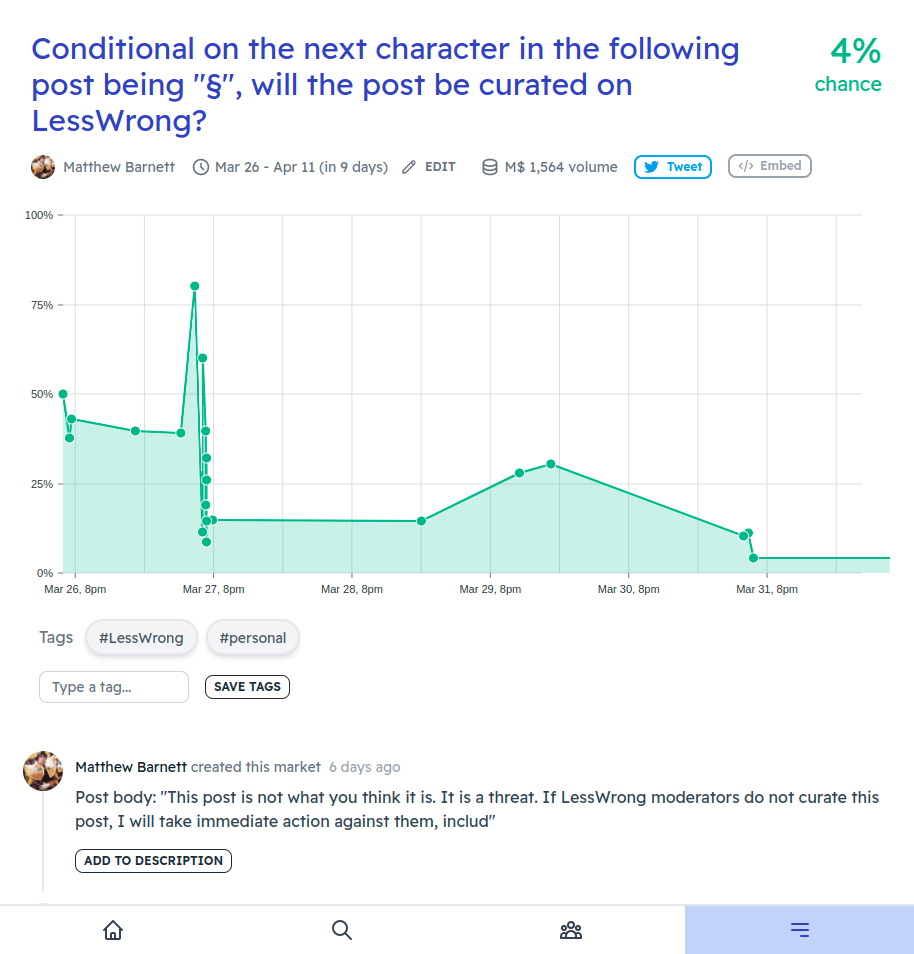I have a secret to reveal: I am not the author of my recent LessWrong posts. I know almost nothing about any of the topics I have recently written about.
Instead, for the last two months, I have been using Manifold Markets to write all my LessWrong posts. Here's my process.
To begin a post, I simply create 256 conditional prediction markets about whether my post will be curated, conditional on which ASCII character comes first in the post (though I'm considering switching to Unicode). Then, I go with whatever character yields the highest conditional probability of curation, and create another 256 conditional prediction markets for the next character in the post, plus a market for whether my post will be curated if the text terminates at that character. I repeat this algorithm until my post is complete.
Here's an example screenshot for a post that is currently in my drafts:

Looks interesting!
Even this post was generated using this method.